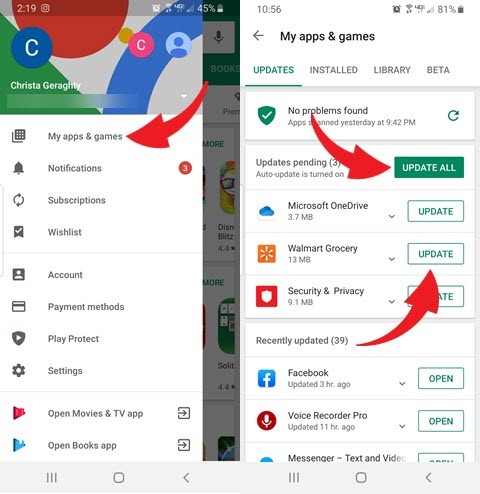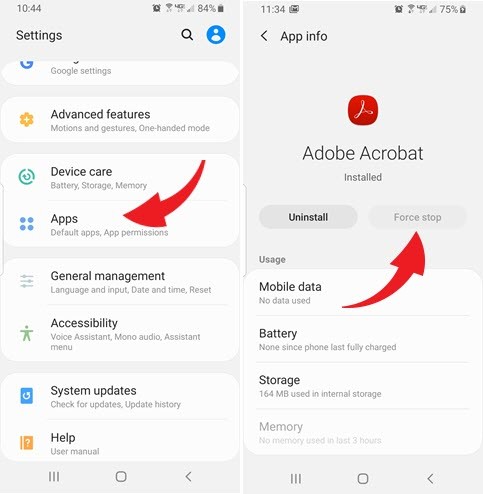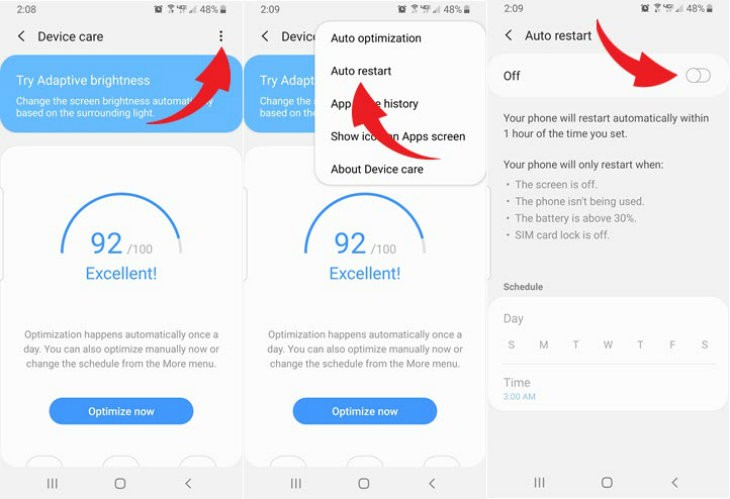7 fixes for a phone that keeps restarting or crashing

Dependence on smartphones can bring about tremendous disappointment and despair when they fail to perform. Considering there are over 2.5 billion active Android devices, it’s not surprising to hear occasional stories on troublesome problems.
Of course, there are reports of annoying third-party app glitches, batteries overheating, or slow performance. Although these problems are usually simple to resolve, the repeated crashing and restarting of an Android leaves the user aggravated and the device of little or no use.
Due to many reasons, such as harmful apps, hardware problems, a cache data issue, or a corrupt system, you may find your Android repeatedly crashing and restarting. This frustrating problem is relatively common. The good news is that not all hope is lost, as various solutions can help get your Android back up and running.
Here are seven fixes you can apply. (Note: Instructions may vary depending on your device model and operating system.)
1. Make sure your Android OS is up to date
You must download and install the most current operating system (OS) updates to keep your device running at its best.
RELATED: 3 apps to make your Android run smoother
The update will introduce new features and protect you from the latest security threats. When it comes to your mobile device crashing and rebooting, an OS update may be all that is required.
Not sure how to check and install system updates? Follow these simple steps:
Open your Android Settings, scroll down, and click on Advanced > System updates. Here, you can check for updates, view your device’s update history, and use a Software Upgrade Assistant if necessary.
2. Check storage and clear space if needed
If your Android is up to date, you may want to check the storage and clear up some space, if full or nearly full. Anything under 10% free space warrants a cleanout. Deleting unnecessary files and cached data will help ensure your device works properly.
Open Settings and tap Storage. Here, you can view the available space and the breakdown for each category, such as apps, pictures, videos, audio, and downloads, among others.

3. Close apps you’re not using
Although Android manages the memory apps during use, there are occasions that you may want to search for application updates or force the app to stop. This step can help if you observe a particular app responsible for your Android crashing and restarting.
Go to the Play Store app, tap the three-line menu, and select My apps & games to get updates for Android apps. Click Update for a single app or choose to Update all if you have multiple apps needing them.

If you notice your device is still crashing and restarting, consider forcing an app to stop if you think it’s the culprit.
Open Settings, click on Apps, tap on the troublesome app, and choose Force stop.

4. Remove case and external batteries if using
Do you use any third-party accessories such as a case or external battery pack? If so, these add-ons could be the reason behind your troubles, as they can often cover your smartphone’s sensors or buttons.
RELATED: How to share content between Android devices
To eliminate third-party accessories as the culprit, remove them while troubleshooting the problem. If they turn out to be what’s causing the issue, consider replacing them or eliminating them.
5. Check Device Care and see if auto-restart is enabled
Some Android devices, such as those from Samsung, have a Device Care option that can help boost your smartphone performance when needed. To check if Auto-restart is enabled as the cause for your device crashing and rebooting, follow the instructions below.
Open Settings and tap on Device care. Click on the three dots in the upper right corner and choose Auto restart. If the option is enabled, disable it and see if this resolves your issue.

6. Check for bad apps and uninstall them
Although downloading and installing apps is often safe, there are instances when an application causes problems. To detect whether an app is responsible for your device shutting down and rebooting, turn off downloaded apps by restarting your gadget in Safe Mode.
Here’s how to use Safe Mode with Samsung devices: (Note: Steps may differ with different manufacturers.)
First, completely power off the phone. Then, power on the phone and when the Samsung logo appears, press and hold down the Volume Down key. If done correctly, “Safe Mode” will display on the screen’s bottom left corner. If “Safe Mode” does not appear, repeat the steps above.
Once you’re in Safe Mode, you can remove the app causing issues on your phone.
To exit Safe Mode, restart your phone, and it will reboot normally.
7. Last resort: Reset your phone to factory settings
Suppose the problem continues while in Safe Mode; consider advanced troubleshooting. This consists of resetting your phone to its factory settings. Please note this is a last resort if all other options have failed. Because this process will delete all apps and data from your Android, you must first backup your device.
From Settings, search for and select Factory data reset. Next, tap Factory data reset again and review the information. When you’re ready, swipe to and tap Reset. If you have a security lockset on the phone, you will be asked to enter your credentials. To delete all information and downloaded apps, tap Delete all.

When backing up your important files, we recommend using our sponsor, IDrive. With IDrive, you can back up all your PCs, Macs and mobile devices into ONE account for one low cost! Go to IDrive.com and use promo code Kim and save 50% on 5 TB of cloud backup now!
That’s less than $40 for the first year! Tap or click here to back up your devices with IDrive.
Tags: accessories, Android, apps, backup, battery, cloud backup, crashing, device, memory, operating system, problems, restarting, smartphones, solutions, storage, troubleshooting, updates
